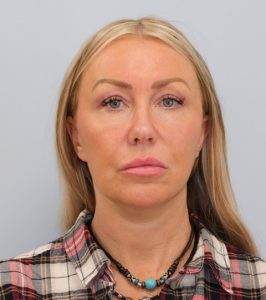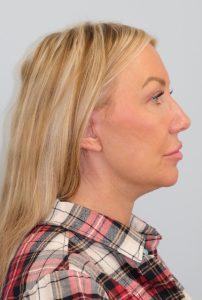What is a SMAS Facelift?




What is a SMAS Facelift?
A SMAS facelift (rhytidectomy) is a surgical procedure that corrects the appearance of the neck and the lower two-thirds of the face. It is less invasive than a traditional facelift and recovery is faster.
What does a SMAS Facelift correct?
- Sagging in the mid part of the face
- Sagging cheek fat
- Hollow cheeks
- Nasolabial folds (creases on sides of nose extending to mouth, also caused smile or laugh lines)
- Loose skin and fat under the chin and jawline (jowls)
- Sagging of the neck
- ‘Double chin’
Facial droopiness (also known as ‘ptosis’) isn’t just caused by skin laxity, but also by changes in the tension of the fine ligaments that rivet the skin to the deeper structures of the face.
As we age, the forehead, brow, the mid face (with its facial fat such as the buccal fat pads), the jowls and the skin of the neck all start to migrate downwards. A cause of this is the layer under the skin known as the SMAS (Superficial Muscular Aponeurotic System), which loses its tightness with age.
This layer wraps the deeper parts of our face from the neck to the head. It touches and connects with the superficial muscles of the neck (known as platysma) and the deeper layers of the scalp (the Galea). Also the fattiness or chubbiness of the face disappears as fat moves or disappears with time. The traditional facelift evolved to manipulate and tighten the SMAS and also the platysmal.
What does the term ‘Facelift’ actually mean?
The confusing term of ‘Facelift’ originates from the different ways surgeons tighten and pull the SMAS. Essentially, the type of facelift carried out depends on the way the face has aged. The forces that cause the face to mature are significant and strong, therefore surgical facelift techniques to rejuvenate have to resist the continued affects of ageing, which never stop. Therefore, any rejuvenation surgery has to be robust enough to resist this. In reality, none of these methods will halt the effects of time. The question of longevity is multifactorial but surgery, which causes significant repositioning and tightening of the SMAS and the platysma, will last longer.
Also, rejuvenation is not just about tightening in the correct direction or vector, it can also require replacement of volume caused by fat loss in the face to areas such as the cheeks as well as removing unwanted fat especially under the chin, so other procedures such as minimal gentle liposuction and lipo-filling are often carried out in addition to the facelift at the same time. Artists have known for a long time that the eyes express the soul. It is not uncommon for bagginess and ageing of the upper and lower eyelids to be corrected at the same time as a SMAS facelift. Hiroshi believes that the correct analysis of the way a patient’s face has aged is very important. This will allow the correct technique to be used along with appropriate additional treatments.
A SMAS facelift can take several hours to complete and is performed under Local Anaesthetic and IV Sedation at Hiroshi’s Nishikawa’s private practice. Patients return home the same day as surgery.
Find out more about Hiroshi’s patient, Sammy, who had a SMAS facelift earlier on this year, by clicking on this link.


